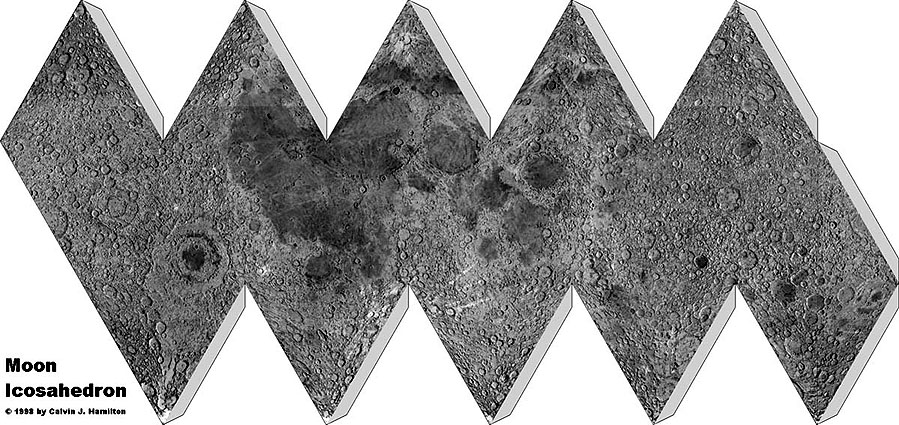Difference between revisions of "March 21, 2004"
| (One intermediate revision by the same user not shown) | |||
| Line 1: | Line 1: | ||
__NOTOC__ | __NOTOC__ | ||
=Fold a Moon= | =Fold a Moon= | ||
| + | <!-- Start of content --> | ||
<table width="640" border="0" align="center" cellpadding="6" cellspacing="2"> | <table width="640" border="0" align="center" cellpadding="6" cellspacing="2"> | ||
<tr> | <tr> | ||
| Line 59: | Line 60: | ||
</table> | </table> | ||
<p> </p> | <p> </p> | ||
| − | + | <!-- End of content --> | |
| − | + | {{wiki/ArticleFooter}} | |
| − | |||
| − | |||
| − | <!-- | ||
| − | |||
| − | |||
| − | |||
| − | |||
| − | |||
| − | |||
| − | |||
Latest revision as of 18:14, 7 February 2015
Fold a Moon
Image Credit: Calvin J. Hamilton |
|
Fold a Moon Is it a globe if it has 20 sides? Not really, but its close enough to be a useful 3-D rendition of the Moon. Go to Calvin Hamilton's web site to download a larger version of this image, and then with, scissors, glue or two-side tape, fold yourself a Moon. Although your Moon will be only 2.75" across, it is large enough to see relationships you miss on a flat map. In fact, even on the unfolded version above you can see that the biggest arc on the Moon isn't the Apennine or Altai mountains, its the shoreline of Oceanus Procellarum. In fact, two scientists independently proposed that Procellarum fills the western half of the Moon's oldest and largest impact basin - Gargantuan. The eastern side of the basin as been disfigured by later forming Imbrium and Serenitatis, but traces of its rim are visible from Sinus Medii to Julius Caesar. Twirl your globe around to look for other surprises! Or revisit the web site to download globes of other planets and moons - you can make your own miniature solar system. And these would be great activities for kids! Technical Details: Related Links: Yesterday's LPOD: An Unusual View of a Lunar Limb Tomorrow's LPOD: Double Planet |
|
Author & Editor: |
COMMENTS?
Register, Log in, and join in the comments.




